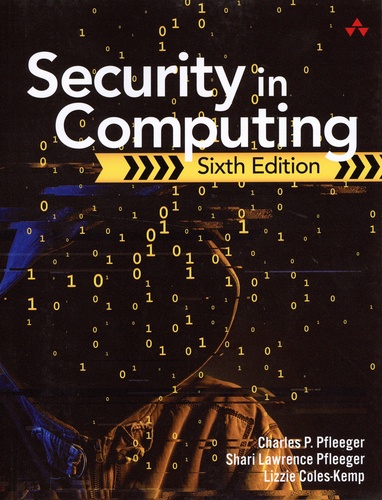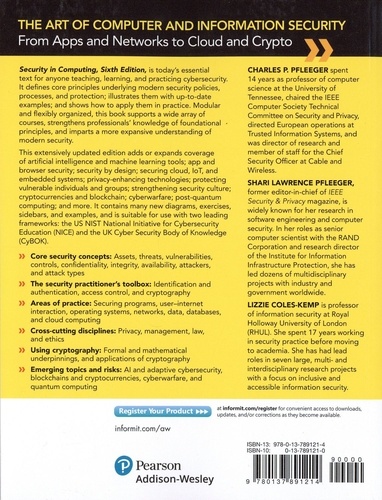En cours de chargement...
Security in Computing, Sixth Edition, is today's essential text for anyone teaching, learning, and practicing cybersecurity. It defines core principles underlying modern security policies, processes, and protection ; illustrates them with up-to-date examples ; and shows how to apply them in practice. Modular and flexibly organized, this book supports a wide array of courses, strengthens professionals' knowledge of foundational principles, and imparts a more expansive understanding of modern security.
This extensively updated edition adds or expands coverage of artificial intelligence and machine learning tools ; app and browser security ; security by design ; securing cloud, lot, and embedded systems ; privacy-enhancing technologies ; protecting vulnerable individuals and groups ; strengthening security culture ; cryptocurrencies and blockchain ; cyberwarfare ; post-quantum computing ; and more.
It contains many new diagrams, exercises, sidebars, and examples, and is suitable for use with two leading frameworks : the US NIST National Initiative for Cybersecurity Education (NICE) and the UK Cyber Security Body of Knowledge (CyBOK). Core security concepts : Assets, threats, vulnerabilities, controls, confidentiality, integrity, availability, attackers, and attack types. The security practitioner's toolbox : Identification and authentication, access control, and cryptography.
Areas of practice : Securing programs, user - internet interaction, operating systems, networks, data, databases, and cloud computing. Cross-cutting disciplines : Privacy, management, law, and ethics. Using cryptography : Formal and mathematical underpinnings, and applications of cryptography. Emerging topics and risks : Al and adaptive cybersecurity, blockchains and cryptocurrencies, cyberwarfare, and quantum computing.








